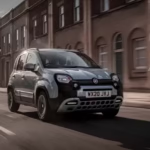
Volkswagen continues to use front-wheel drive (FWD) in many of its vehicles due to a combination of practicality, efficiency, and cost-effectiveness. FWD layouts are generally more space-efficient because the engine and transmission are mounted together at the front, which frees up cabin and cargo space. This makes FWD especially appealing for compact and midsize cars—segments in which Volkswagen has traditionally been strong, such as with the Golf, Jetta, and Passat.
From an engineering standpoint, FWD vehicles tend to be lighter and offer better fuel economy than rear-wheel-drive alternatives, making them attractive for everyday drivers. They also perform well in adverse weather conditions like rain or snow, providing more traction since the weight of the engine is over the driven wheels. This is particularly beneficial in European and North American markets where such conditions are common.
Moreover, retaining FWD helps Volkswagen maintain affordability and streamline production, as fewer components are needed compared to all-wheel or rear-wheel drive systems. While the brand does offer all-wheel drive in performance and SUV models like the Golf R or Tiguan, FWD remains a smart choice for most of its lineup, meeting the needs of typical drivers without compromising reliability or handling.





